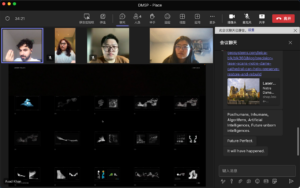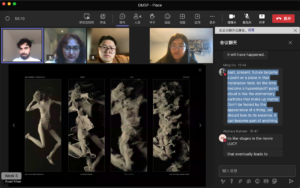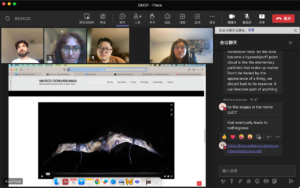1. Concept
After reviewing our submission 1, Asad suggested using the concept of Hyperobjects to interconnect everyone’s ideas. He recommended we read “Hyperobjects: Philosophy and Ecology after the End of the World”.
https://www.upress.umn.edu/book-division/books/hyperobjects
Hyperobjects are massive, complex objects, such as climate, pollution, and cities. Typically, we can only indirectly perceive aspects of Hyperobjects and not see the whole picture. However, we can render these massive hyperobjects into sound and visuals, making this project into a data-informed synthesis of Hyperobjects.
2. Case Study
Recording Artist: Ben Frost
He used non-human phenomena to illustrate the scale and the stakes of the Amazon’s demolition.
Field Researcher: Richard Mosse
Bjork communicated with Timothy Morton about hyperobjects through letters.
Herman Kolgen worked with Seismic Data, explaining the earth as if the whole earth is an instrument.
3. Discussion
Asad began with an example of how precision LiDAR scans of the Notre Dame Cathedral, which had been destroyed, recorded its original appearance. This makes it so that nothing about this place truly vanishes; the electronic data from the LiDAR scans serve as an afterlife of this place.
Perhaps, our project isn’t just for us. The audience may not even be born yet. This work could be for Posthumans, Inhumans, Algorithms, Artificial Intelligences, and future unborn intelligences. We can use LiDAR-scanned point clouds to bring a place into the future.
Akshara asked how LiDAR-scanned locations could represent the hyperobject of climate change. Asad showed us the world’s oldest archive, a cave that existed before humans. This project uses Python for data analysis to analyze future ice melting trends, visualizing the appearance of ice caves after melting. Nature seems to become the architect, designing the space’s shape.

Asad also mentioned that we could consider point clouds as combinations of atoms, allowing us to modify the atoms in any way, such as changing the atom of a building into human hands. In the example below, Asad used dust as atoms to design the work.

Lastly, Asad discussed the interactive part, recommending the work “CORPUS NIL”. This innovative work utilizes Reinforcement Learning to enable machines to determine the most effective sound for the specific muscle moving. It involves outfitting a performer with numerous sensors across their body. These sensors capture the performer’s movements, and the system’s algorithm then processes this data to select and generate the sound that most accurately represents these movements. Following this, the performer reacts to the sound produced, creating a new sound as feedback. This interactive loop of action, sound generation, and response creates a dynamic performance that blurs the lines between human and machine collaboration.


